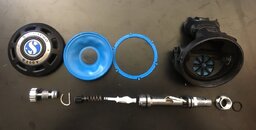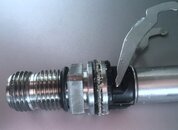Belzelbub
Contributor
See below.What happens to owners of their (or any other smaller brand, single product manufacturer) regs if/when they go out of business? Are they still serviceable using generic parts or are you SOL ?
Yep. You may also see similar with brands still in existence. Older models that are just too different from current models, and the manufacturer decides, for one reason or another to end support. How they handle that can be very different.You mean, like Healthways? Or Dacor, or Aeris or SubTech. Or...
Those guys were medium to big dogs once upon a time. Try finding parts now.
On one end, you have Mares and Dacor. Mares bought Dacor, and soon after killed the brand and effectively ended support.
On the other end, you can look at Zeagle and Apeks. Early Zeagle regulators were rebadged Apeks. Zeagle was the US Distributor for Apeks. When that relationship changed, Zeagle was no longer able to rely on getting parts for the Apeks clones. Their response was a limited time buyback. Owners had a limited time where they could return their older Zeagles for newer Zeagles.
Ultimately, there is no guarantee that a brand will still be around 5 or 10 years down the road, but that’s the same with just about everything, and largely unpredictable. What is more predictable is on-going support for models. Some brands use a single service kit across their entire line. That’s a pretty good indicator of future support. The LDS should be able to tell you how many kits a manufacturer uses.





